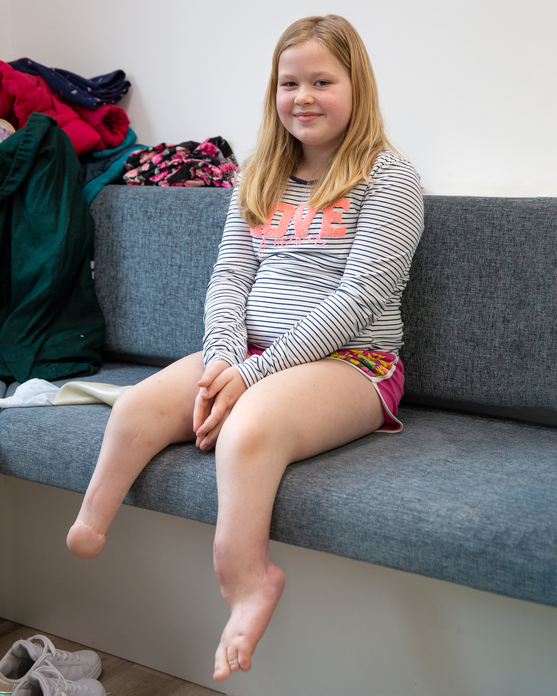Absence of the fibula
What is fibular hemimelia?
Fibular hemimelia (sometimes referred to as fibular deficiency) is a congenital deformity of the leg and refers to the partial to complete absence of the fibula (small shin bone). The cause remains unknown to this day, however, it is clear that this is not a genetic defect.
The absence of the fibula causes leg asymmetry. Approximately 10% of cases involve both legs. The affected leg is significantly shortened and there is a valgus deformity in the lower leg.
Fibular hemimelia occurs either alone or in combination with PFFD (proximal focal femoral deficiency) or anomalies of the foot and/or hips.
Fibular hypoplasia (type 1a/1b) refers to cases whether a part of the fibula is missing. In these cases, the fibular is present but underdeveloped. The complete absence of the fibula is called fibular aplasia (type 2).

This device compensates for the leg length difference and provides corrective support.
Orthoprosthetic treatment of lower extremity longitudinal limb deformities of children and adolescents.
Make an appointment over the phone or send us a message!
Sample treatment

Bilateral fibular aplasia (with pes equinus, stiff ankle joint, missing or undeveloped foot bones, dimpling of the tibia).

Caring for children and adolescents with fibular hemimelia is part of our daily work. Contrary to some assumptions, aplasia can also be treated very well with orthoprostheses. There is hardly any patient that we can't get back up and running.
Full power despite orthoprosthesis and prosthesis
Juna's story
Juna is a super athlete. She loves water and everything that moves quickly. Perhaps that’s why the six-year-old likes to ride roller blades and skates. At first glance, many people don't even notice that Juna wears two devices on her legs.

The Orthopedic Children’s Clinic in Aschau is one of the largest specialist clinics for pediatric orthopedics in Central Europe.
When it comes to orthopedic treatment for infants and children, it is extremely important for all parties to pull together: parents, doctors, technicians and therapists.
Physiotherapists support the individual care of our little patients at our headquarters and all of our branches.

PFFD, fibular hemimelia, transverse and longitudinal dysmelia
Malformations of all four extremities
They had not expected it and were completely unprepared for this outcome: Until his birth, Nathanael’s parents thought that they would deliver a healthy child. When their first-born son was born, they were shocked: Nathanael has dysmelia affecting all four limbs...

Let yourself be inspired! We accompany many interesting patients during their Pohlig appointment and give you personal insights.

For those who want to delve even deeper into the matter, we have a suitable video for almost every supply area.

Take a look behind the scenes at Pohlig and find out about diagnoses and our innovative aid solutions!


